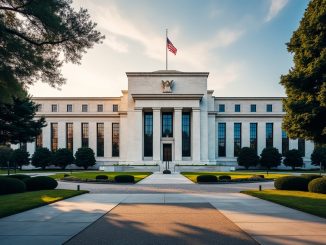Monday’s report on CNBC is that Congress is nearing a bill on new financial regulations aimed at the Too Big to Fail problem. The details are vague, but the crux of it is that the government wants the power to wind down failing financial institutions much in the same way the FDIC has the power to unwind failing commercial banks.
(FYI, very nice piece over at Economics of Contempt on TBTF, which I recommend. I’m not going to cover much of the same territory here, but he makes a lot of great points.)
Here are my basic concerns. First, we cannot wind up with a banking regulatory scheme that focuses on hard targets for anything. Systemic importance can’t be measured just by assets. State Street and SLM Corp have about the same asset level, but the former is much more systemically important than the later. Or what about a firm like Ambac? Ambac’s asset level peaked at only $24 billion, but certainly it had more systemic importance than its size suggested. I’m not sure it would rise to the level of Too Big to Fail or not, but I think we’d all agree that while size may matter, it isn’t everything.
Not only is there no single number for systemic importance, there also isn’t any single calculation that will measure effective risk a financial firm is taking. We know in the recent crisis that Citigroup had all sorts of off-balance sheet risks. As of 2007, Citi had a Tier 1 ratio of 7.1, but its effective leverage was much higher than that.
And its not all about leverage either. Look at Lehman. They had a Tier 1 ratio of 11 just weeks before they were bankrupt. Their problem was part their funding mix which was very reliant on repo and prime brokerage, and part the fact that the market didn’t believe their valuations on some illiquid assets. Maybe had either of those circumstances been different, i.e, the same leverage and assets but a more stable funding mix, they would have survived. Regardless, a regulator scheme based on leverage ratios never would have caught Lehman before it was too late. Nominally, they had plenty of capital.
We also don’t want a scheme which is overly focused on routing out bad lending. I say this because I have as much confidence in regulators judging loan quality as I do Chancellor Valorum. In fact, my suspicion is that regulators will likely spend most of their time fighting past wars. So if we assume that there will be another period where lending standards become dangerously weak (which there will be), we should also assume that regulators won’t be able to foresee the problems and stop them before they start. Put another way, there will be spilled jawa juice. You can’t prevent it. We need to be able to clean up the mess a lot better than we did this time around.
One of the problems we had this time around was that for a long while there was very little differentiation between bad banks and not-so-bad banks. For example, if we go back to November of last year, a bank like M&T Bank would have had a very hard time raising fresh equity capital. Did M&T make some lending mistakes? Sure. But by being completely shut out of the equity market, didn’t that basically make M&T no different than a bank like National City? Or even better, could Wells Fargo had realistically sold new equity in February when every one was talking nationalization? Again, did Wells make some lending mistakes? Absolutely. But is it healthy for the system for banks to be viewed as so black and white? Back then it was good or bad. Whereas in reality, every bank was grey.
Let’s take it as a given, just for a moment, that M&T Bank had an above-average quality portfolio. I’m just using them as an example, I don’t really know M&T’s portfolio that well. Why did they have so poor access to the capital markets? The stock market presumed that all banks would need to raise capital or else they would be driven under (or nationalized) by regulators. So bank stock prices kept falling and falling, making any realistic capital raise harder and harder. No one benefited from this self-fulfilling prophesy.
This example illustrates that we don’t want a system that forces access to the capital markets as a pre-condition to survival. The stock market will run ahead of the potential capital raise, making it more and more painful. In fact, one could argue that’s what happened with Lehman. The falling stock price basically dared Dick Fuld to try to gut it out without any additional capital. Again, no one benefited from this scheme.
This is why the idea of contingent capital makes so much sense to me. A bank has a ready set of equity investors whenever its needed. It instills market discipline, as the current stock price would reflect the potential for dilution, but the falling stock price wouldn’t prevent a capital raise. In effect, this is a little like a standard bankruptcy, where bond holders take control of a company, except that instead of the company actually going through such a disruptive process, ownership just transfers (in part) to the contingent capital bondholders automatically.
We’ll undoubtedly spend a lot of time on this subject in the coming weeks and months and I’m sure it will feel very much like a moving target. I can’t wait.
- Bulenox: Get 45% to 91% OFF ... Use Discount Code: UNO
- Risk Our Money Not Yours | Get 50% to 90% OFF ... Use Discount Code: MMBVBKSM
Disclaimer: This page contains affiliate links. If you choose to make a purchase after clicking a link, we may receive a commission at no additional cost to you. Thank you for your support!




Leave a Reply